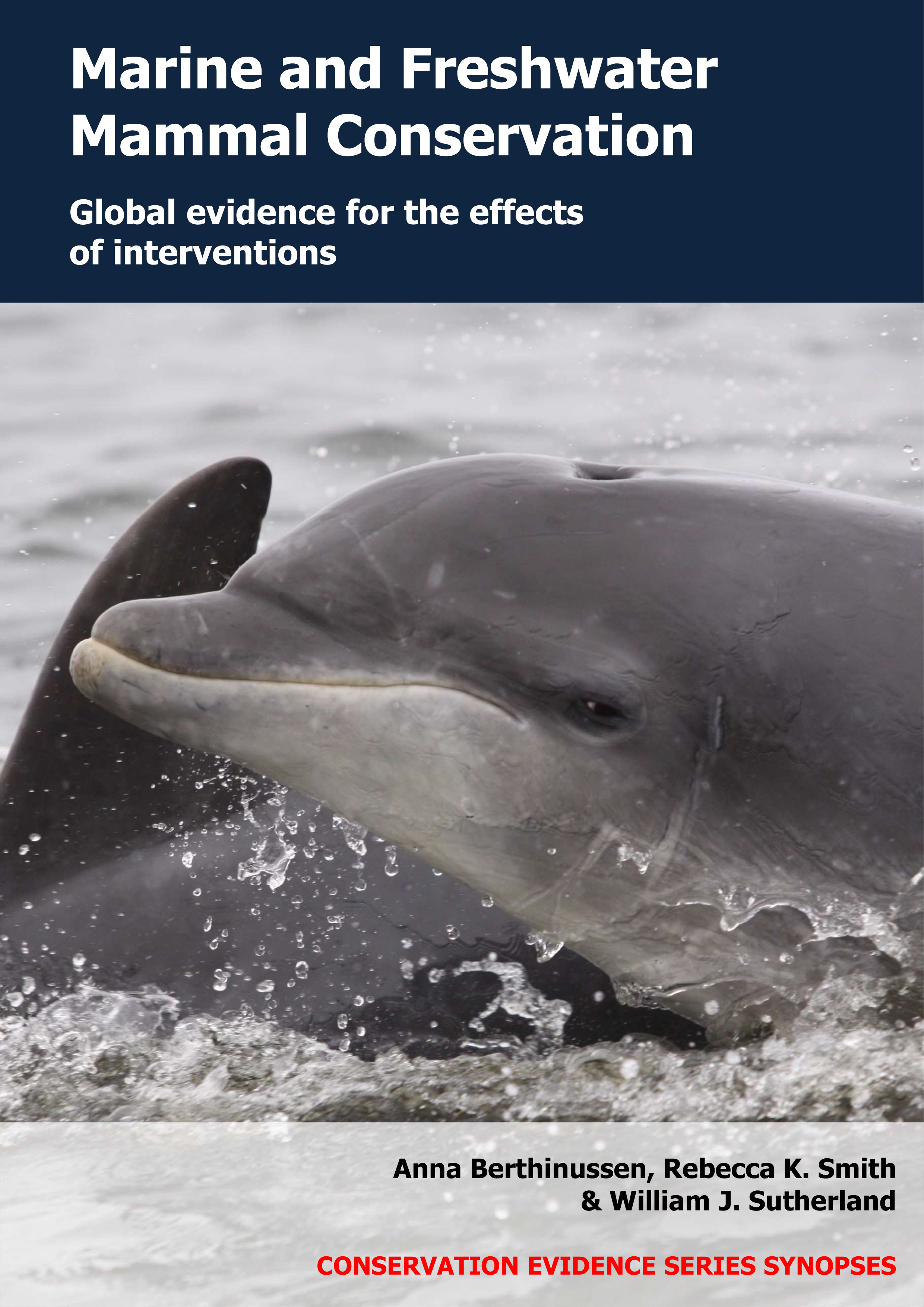Release captive-bred marine and freshwater mammals to re-establish or boost native populations
-
Overall effectiveness category Unknown effectiveness (limited evidence)
-
Number of studies: 2
View assessment score
Hide assessment score
How is the evidence assessed?
-
Effectiveness
30% -
Certainty
30% -
Harms
20%
Study locations
Supporting evidence from individual studies
A study in 1994–2012 in an estuary near Porto de Pedras, northeast Brazil (Normande et al. 2015) found that two of three captive-born Antillean manatees Trichechus manatus manatus released into the wild survived for at least one year. Two of three captive-born manatees (a male and a female) survived for at least one year after release into the wild and did not need to be rescued. The other male manatee died in the first year after release. Three manatees born in captivity (two males, one female) were released (aged 3–5 years old) in an estuary within a marine protected area between 1994 and 2012. Manatees were kept in enclosures at release sites for 15 days or 3–12 months prior to release. Manatees were fitted with satellite tags and tracked for an average of 972 days after release.
Study and other actions testedA replicated study in 1988–2013 at multiple freshwater, marine and brackish water sites in Florida, USA (Adimey et al. 2016) found that two of 14 captive-born Florida manatees Trichechus manatus latirostris released into the wild survived for at least one year. Two of 14 captive-born manatees (14%) survived for at least one year in the wild after release, occupied appropriate habitats, did not need to be rescued and were in good condition. The other 12 manatees required additional rescue(s) or medical treatment or died within the first year (number for each not reported). All of 14 manatees born in captivity were tagged and released (aged between <1 and >10 years old) at warm freshwater, marine or brackish water sites (number of each not reported) used by wild manatees. Each of 14 released manatees was monitored with radio-tracking and visual observations once or twice/week for at least one year in 1988–2013.
Study and other actions tested
Where has this evidence come from?
List of journals searched by synopsis
All the journals searched for all synopses
This Action forms part of the Action Synopsis:
Marine and Freshwater Mammal Conservation
Marine and Freshwater Mammal Conservation - Published 2021
Marine and Freshwater Mammal Synopsis





)_2023.JPG)














